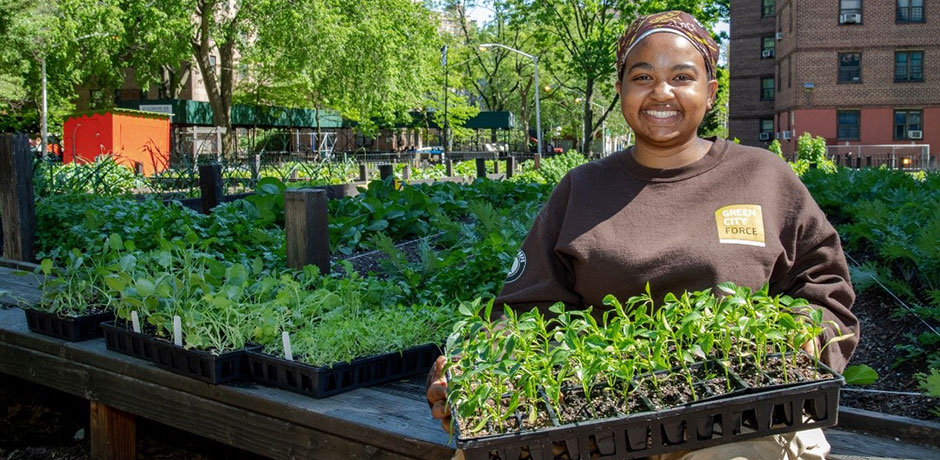Unknown Facts About City Blooming
Unknown Facts About City Blooming
Blog Article
4 Simple Techniques For City Blooming
Table of ContentsIndicators on City Blooming You Should KnowRumored Buzz on City BloomingThe Best Guide To City BloomingSome Known Incorrect Statements About City Blooming Indicators on City Blooming You Should Know
Fascinated in growing food for sale in the City of Chicago? Below is a list of often asked concerns concerning the policies and regulations that cultivators need to think about when intending an urban agriculture task.
The zoning modification does not change any kind of various other codes taking care of composting, building authorizations, buying or leasing City had home, company licenses or ecological contamination. There are existing codes that regulate these issues and they stay in complete effect and might apply to your job. Neighborhood gardens are typically had or taken care of by public entities, civic companies or community-based organizations and kept by volunteers.
Urban ranches expand food that is meant to be sold, either on a not-for-profit or for-profit basis. Due to their industrial purpose, metropolitan ranches call for a service permit.
Facts About City Blooming Uncovered
Composting is permitted however only for plant product that is created and used on website. The amount of garden compost product can not surpass 25 cubic backyards at any type of provided time according to the requirements in 7-28-715 of the City's Municipal Code. Yes. Since the dirt at the majority of new yard sites requires changing, garden compost, soil, timber chips, or various other materials can be obtained to create or improve the expanding space - container and raised bed gardening etc..

If a structure permit is called for after that the hoophouse will be considered an accessory structure. You can learn even more about the structure permit needs by calling the Department of Buildings. The 25,000-square-foot size restriction is intended to avoid a single area yard from dominating an offered block or diminishing the block's existing household or industrial character.
The limit does not apply to gardens found in Public Open Area (POS) areas. Can there be more than one neighborhood garden that is 25,000 square feet on a single block? Fencing is not required, however, yards that have large auto parking areas might be needed to set up fencing or other landscaping functions.
City Blooming Things To Know Before You Get This
B1 & B2 areas need that all business usage tasks be carried out indoors. R areas restrict commercial task. The laws reflect the objective and intent of the Zoning Code. Is secure fencing required for metropolitan ranches? Yes. Fencings may be needed, together with landscaping and screening, for sure car park locations and exterior work or storage areas depending on location and the certain task taking location.
Yes. Urban ranches require structure licenses and zoning approvals prior to building. Other kinds of city evaluation may be called for relying on certain structures, activities, dimension, landscaping, licensing, public heath and stormwater management concerns. A number of these requirements are identified in the project layout or allowing process, nonetheless, the applicant may be liable to independently identify specific licenses or allows that might be required.
The Department of Business Matters and Consumer Security can aid figure out the specific type of business permit that's required. Off street car park is required for many commercial jobs in Chicago. The called for number of vehicle parking spaces is based on the number of staff members functioning on website and not the square footage of the growing room.
The Greatest Guide To City Blooming

A city ranch can offer compost product created on website, nevertheless, the operation must abide with the laws in 7-28-715 of the Chicago Municipal Code. Aquaponic systems are permitted inside your home on metropolitan farms in several zoning districts.
As much as 5 hives or nests of honey might be kept as an accessory usage. her latest blog Beekeepers must sign up with the Illinois Division of Agriculture. To find out more about the recommended zoning modification you might contact the Division of Real Estate and Economic Growth, Bureau of Preparation and Zoning at 312.744.8563.
Farming in cities and urban locations A metropolitan ranch in Chicago. Urban agriculture describes numerous methods of growing. https://cityblooming.weebly.com/, processing, and distributing food in city locations. The term likewise relates to the location activities of pet husbandry, aquaculture, beekeeping, and horticulture in a city context. Urban farming is distinguished from peri-urban farming, which happens in country areas beside suburbs.
Everything about City Blooming
It can include a motion of organic cultivators, "foodies" and "locavores", that look for to create social networks based on a common principles of nature and neighborhood holism. These networks can create by method of official institutional assistance, becoming incorporated into neighborhood town as a "shift town" movement for lasting city growth.
The more direct access to fresh vegetable, fruit, and meat products that may be know via city farming can improve food safety and security and food security while decreasing food miles, leading to reduced greenhouse gas exhausts, thus contributing to environment modification mitigation. Several of the initial evidence of metropolitan farming comes from Mesopotamia.
Report this page